Your kitchen backsplash does more than just catch splatters. It’s a design feature that can really make or break your kitchen’s vibe for years to come. Plenty of folks pick trendy backsplashes and end up regretting it when styles shift.
Remember to repin your favorite images!
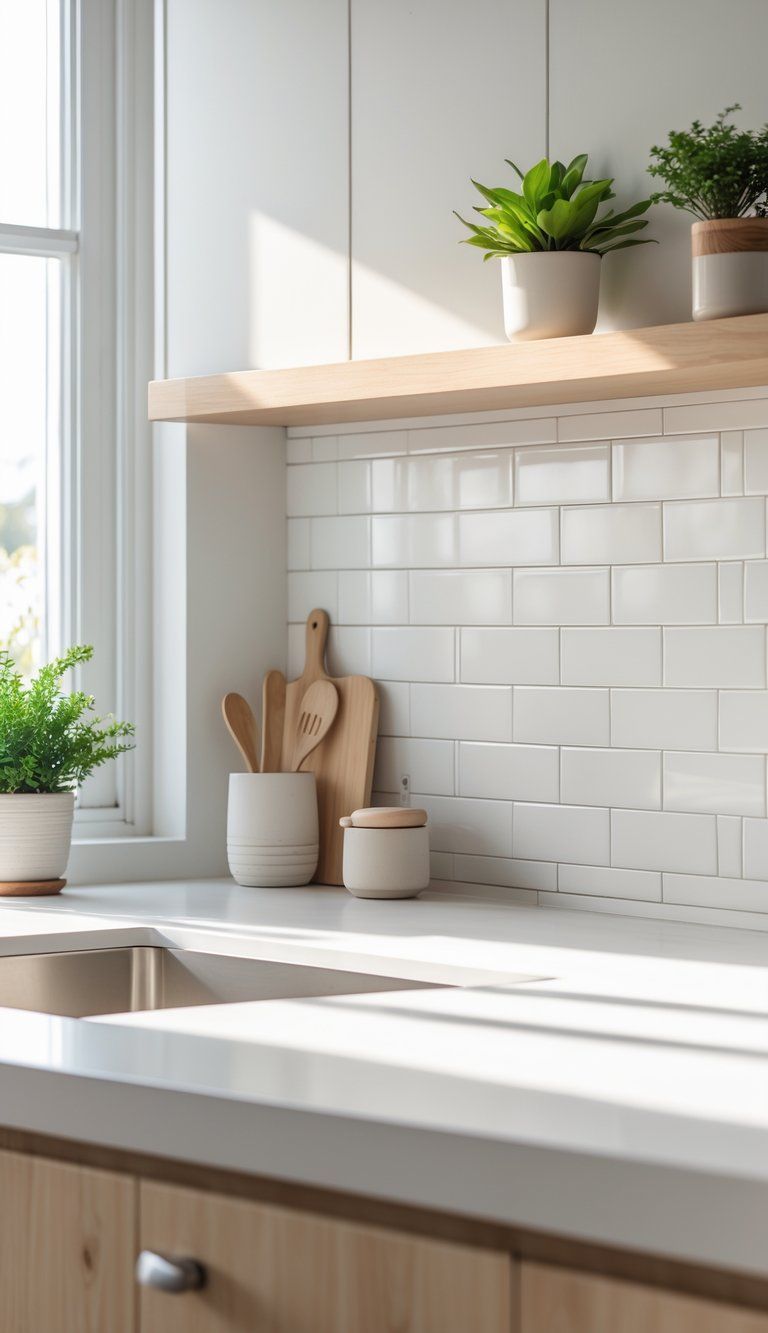
Choosing timeless backsplash materials is honestly one of the smartest things you can do during a kitchen reno. Instead of going for those old 4-inch countertop strips or plastic laminate that scream “last decade,” pick something like ceramic subway tiles, natural stone, or solid quartz. These classics look good, protect your walls, and don’t go out of style.
When you’re picking a backsplash, try to think past what’s “in” right now. Simple, clean lines in neutral shades will always work—even as your cabinets or appliances change over the years.
This mindset keeps your kitchen looking sharp through all sorts of design fads. If you ever sell, it might even bump up your home’s value.
Defining a Timeless Backsplash
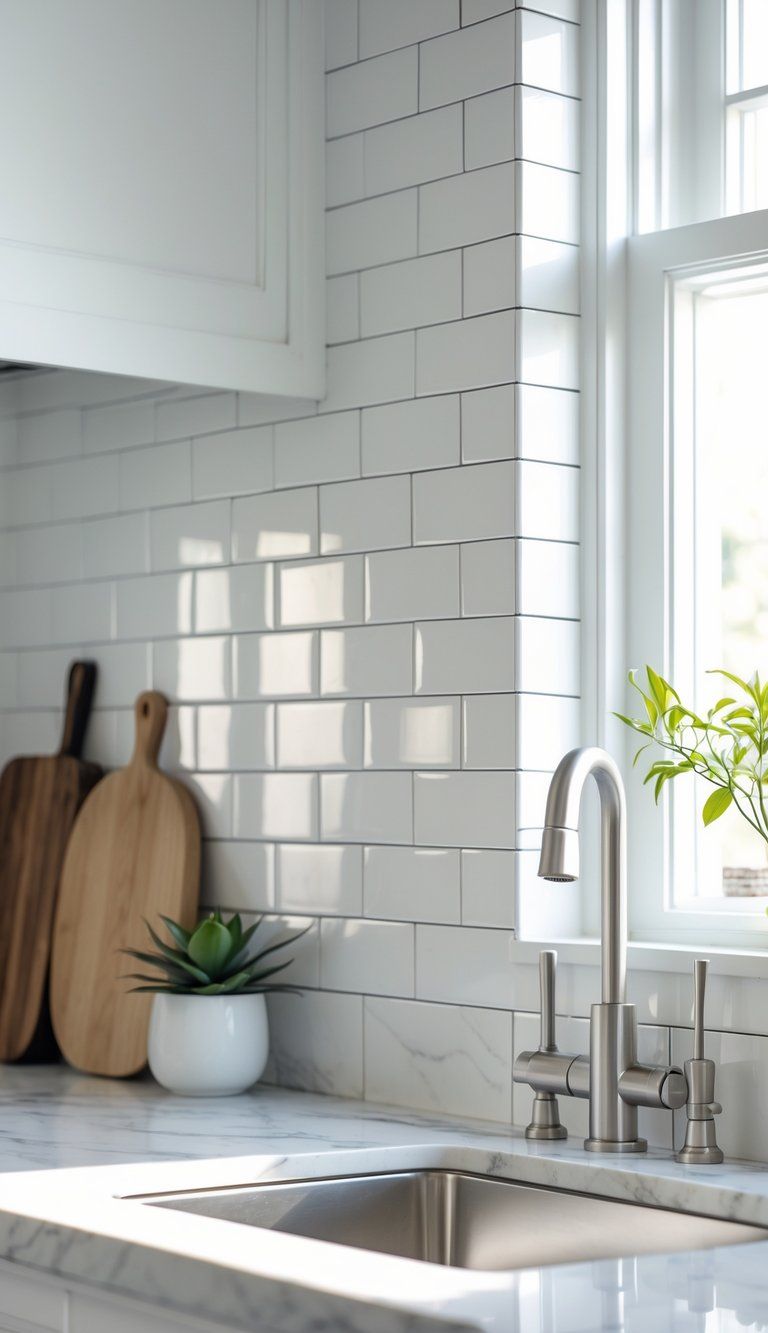
A timeless backsplash blends lasting visual appeal with practical function. It stays stylish, no matter what’s trending.
What Makes Backsplash Materials Timeless?
Timeless backsplash materials all have a few things in common. Natural stuff like marble, quartzite, and some ceramics just have that staying power.
Classic subway tiles, for instance, have stuck around for ages. You can lay them out in all sorts of ways, and they always look right.
Neutral colors matter too. Whites, creams, soft grays—these shades play nice with anything else you throw into your kitchen over the years.
Pattern and how you install the tiles makes a difference. Simple, geometric layouts seem to age better than wild or super-trendy designs. Think about:
- Classic patterns: Herringbone, basket weave, stacked
- Quality work: Neat install and even grout lines
- Right size: Tiles that fit your kitchen—not too big, not too small
Benefits of Choosing a Timeless Design
Going with a timeless backsplash saves you from redoing your kitchen every time trends change. That’s a big win.
A neutral backsplash means you can change up cabinet pulls, wall paint, or even lighting, and the kitchen still feels current.
Buyers notice these details too. Kitchens that don’t need a redo right away are a huge plus if you ever list your house.
You’ll probably feel less decision fatigue. Instead of second-guessing if your kitchen’s dated, you can just enjoy it.
Most timeless backsplash materials are tough, too. Porcelain, ceramic, and stone hold up to daily life without much fuss.
Key Considerations for Material Selection
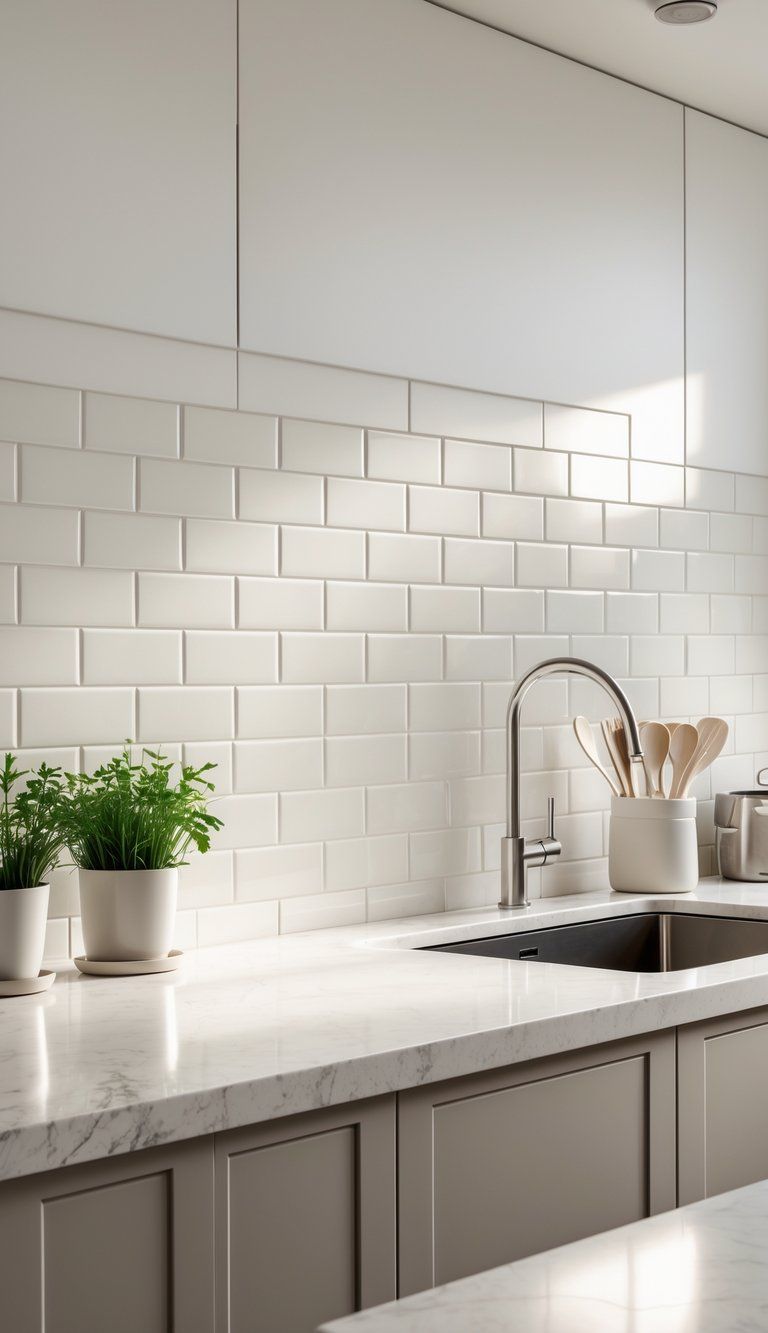
Picking the right backsplash material takes a little thought. You want something that lasts and fits your home’s style.
The best material balances what you need day-to-day with a look that won’t feel old in a few years.
Durability and Maintenance
Durability should top your list. Kitchen backsplashes take a beating from water, heat, and food splatters. Natural stone like marble, limestone, or travertine brings both toughness and timeless beauty.
Porcelain and ceramic tiles are also solid picks. They shrug off heat, moisture, and stains, and you can usually clean them with a quick wipe.
Think about how much maintenance you’re up for. Natural stone sometimes needs sealing, while glass might show water spots. If you want to keep things easy, check out:
- Porcelain tiles
- Ceramic tiles
- Quartz
- Engineered stone
Neutral Tones and Colors
Neutral colors set you up for the long haul. Whites, creams, grays, and soft earth tones won’t make your kitchen look dated.
These soft shades let you play with accessories or paint colors, which are much easier to swap out. A neutral backsplash also lets other design details—like hardware or lighting—stand out.
Worried about neutrals feeling bland? Go for a little texture or a subtle pattern instead of loud colors. Some ideas:
- White subway tiles with gray grout
- Creamy stone with gentle veining
- Pale gray porcelain in cool shapes
- Taupe ceramic with a hint of texture
Adaptability to Backsplash Styles
The most timeless materials work with lots of styles. Subway tile, for example, looks good in modern, traditional, farmhouse, or whatever else you’ve got going on.
Pick materials that give you options in how you lay them out. Even simple tiles can look totally different in herringbone, stacked, or basketweave patterns.
Think about how your backsplash will play with future updates. Trendy or niche materials can box you in, but classics like stone or ceramic tile keep things flexible.
For the best adaptability, stick to materials that have already proven themselves:
- Simple subway tiles
- Marble or limestone
- Neutral ceramic or porcelain
- Soft, transparent glass
Classic and Enduring Backsplash Materials
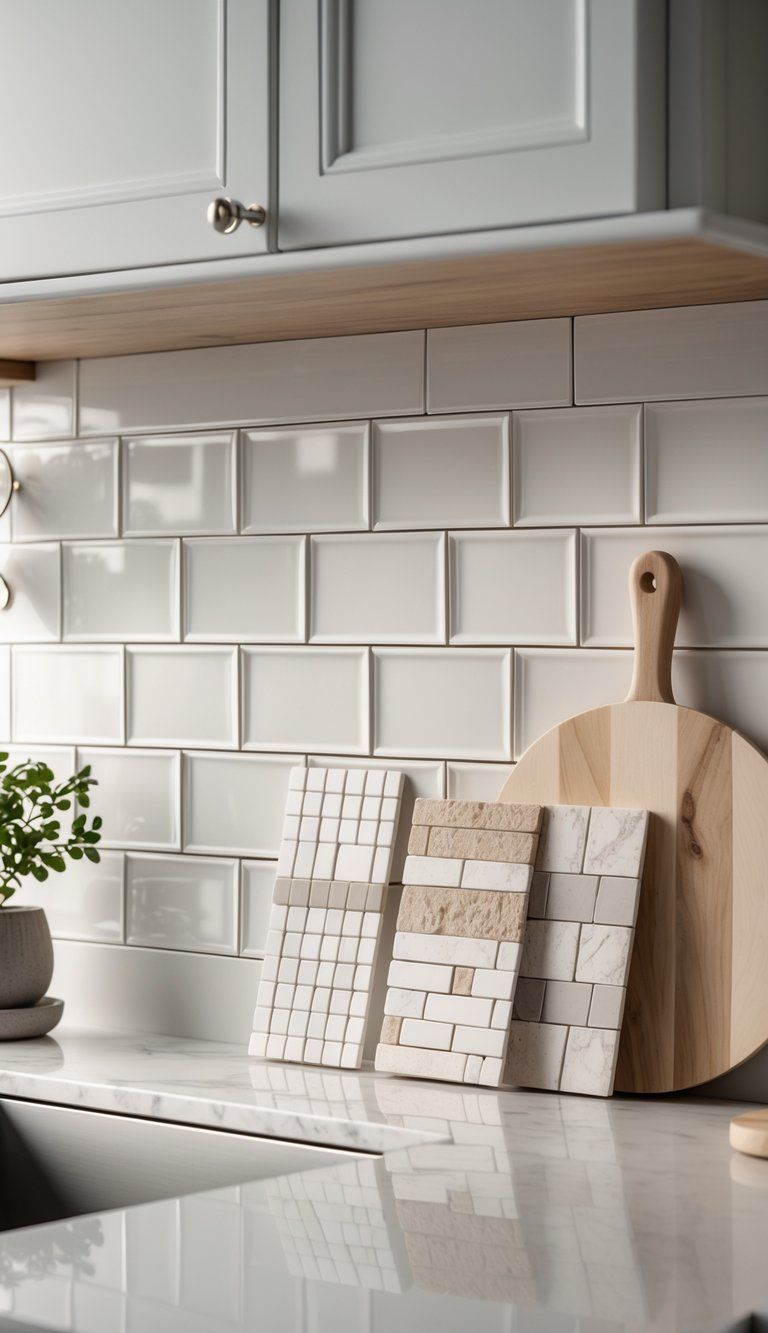
If you want a backsplash that’ll still look good years from now, a few materials have really stood the test of time.
Ceramic and Porcelain Tiles
Ceramic and porcelain tiles always seem to make sense for backsplashes. Ceramic tiles are affordable and stylish, so most people can use them.
Porcelain is just a denser ceramic, and it’s even better at handling water—great for messy spots. It doesn’t show wear easily.
You’ll find these tiles in just about every color, finish, and pattern. For a timeless vibe, stick with neutrals like white, beige, or gray. These shades keep things clean and let you switch up other kitchen elements.
They’re also a breeze to maintain. A wipe with some soapy water does the trick—no fancy sealants needed.
Natural Stone Selections
Natural stone brings a unique, organic feel to your kitchen. Every slab of marble, granite, limestone, or travertine has its own personality.
Marble, with its elegant veins, has been a favorite in fancy spaces for ages. It does need more TLC, but honestly, the look is worth it.
Granite is super durable and has cool speckled patterns. It laughs off heat and scratches, perfect for busy kitchens.
Limestone and travertine bring warm, earthy vibes. Their subtle textures add depth but don’t steal the show.
Don’t forget: natural stone needs sealing every year or two. It’s a small chore for decades of beauty.
Subway Tile Staples
White subway tiles have stuck around since New York’s subways in the early 1900s. That classic 3×6-inch rectangle never really goes out of style.
Most people lay them in a horizontal brick pattern, but you can mix it up with herringbone or vertical layouts and still keep things timeless.
Bright white subway tiles are a safe bet, but soft cream or light gray work too. These shades fit any color scheme.
If you want a little extra character, try subway tiles with beveled edges or a bit of texture. They add depth without making the kitchen feel dated.
You can play with grout color, too. White grout blends in, gray adds definition, and dark grout brings a bold, modern contrast.
Modern Yet Timeless Options
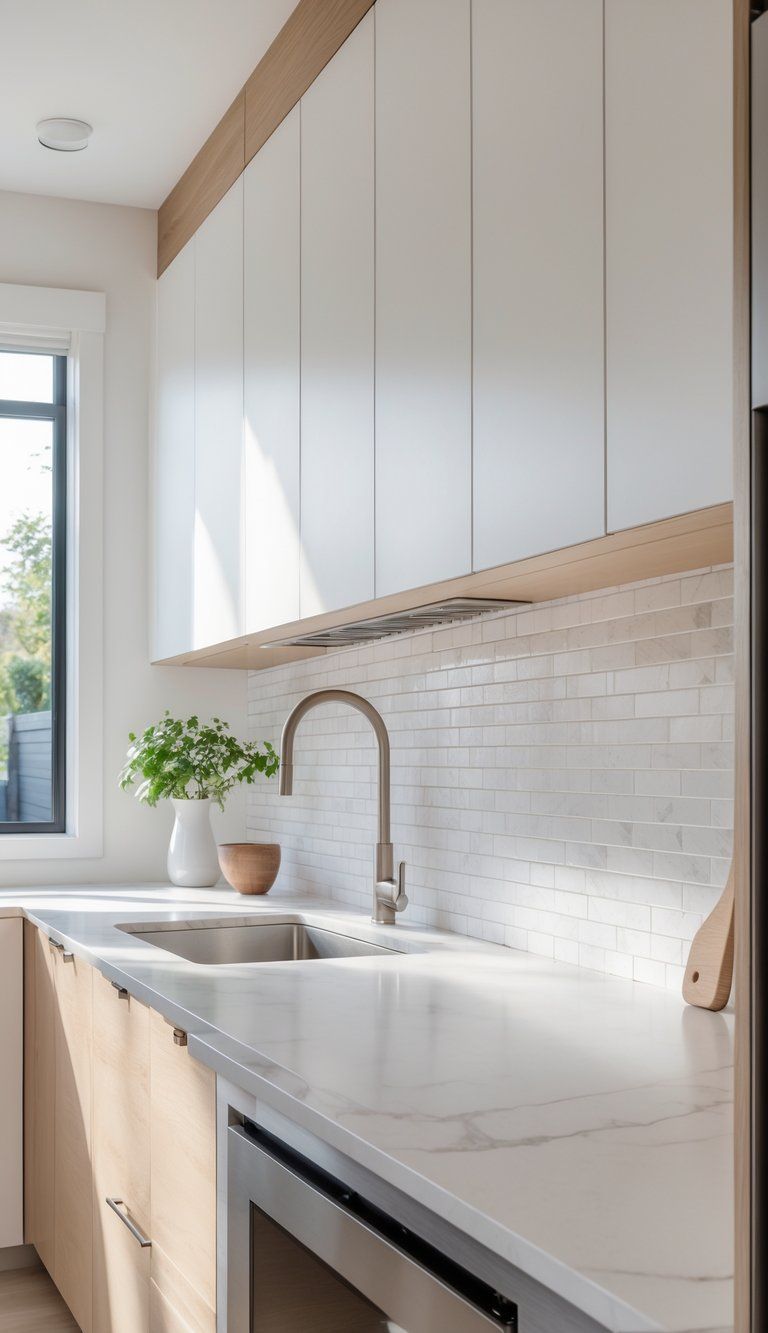
Some newer backsplash materials hit that sweet spot—fresh but not too trendy. They give your kitchen an updated look without the risk of feeling old in a couple of years.
Glass Tile Backsplashes
Glass tile has a sleek, shiny surface that bounces light around and makes kitchens feel bigger. You’ll find everything from big subway-style glass tiles to tiny mosaics for a little texture.
Glass backsplashes really shine in smaller kitchens because they make the space feel more open. There’s a surprising range—clear, frosted, colored, you name it.
If you want a hint of color, try pale blue or sea-green glass tiles. They add interest without going overboard. Prefer neutrals? White or gray glass tiles keep things crisp and modern.
Cleaning is simple—just a quick wipe with glass cleaner keeps them sparkling.
Quartz and Engineered Stone
Quartz backsplashes are tough and look seamless, especially if you match them with your counters. This engineered stone shrugs off stains, scratches, and heat better than a lot of natural materials.
Quartz doesn’t rely on loud patterns, so it won’t get old fast. Some popular picks:
- White quartz with gentle veining
- Soft gray with barely-there patterns
- Beige that works with all sorts of cabinets
Quartz is non-porous, so it resists bacteria and is super easy to clean. It’s a great fit for busy kitchens where you want both style and function.
Lots of people love how quartz can run up the wall from the counter, giving that high-end, grout-free look.
Metallic Accents and Stainless Steel
A little metal goes a long way in a kitchen. Stainless steel, brushed brass, or copper can look sharp without falling into the “trendy” trap.
Stainless steel backsplashes match those pro-style appliances and make the space feel cohesive. They’re tough, heat-resistant, and wipe clean—ideal if you actually cook.
Want something more subtle? Try:
- Small metallic tiles mixed in with neutrals
- Metallic trim around other backsplash materials
- Brushed finishes to cut down on glare and fingerprints
Metal backsplashes are especially handy behind stoves or sinks. The industrial look plays well with both light and dark cabinets, giving your kitchen a timeless edge that still feels current.
Patterns and Layouts That Endure
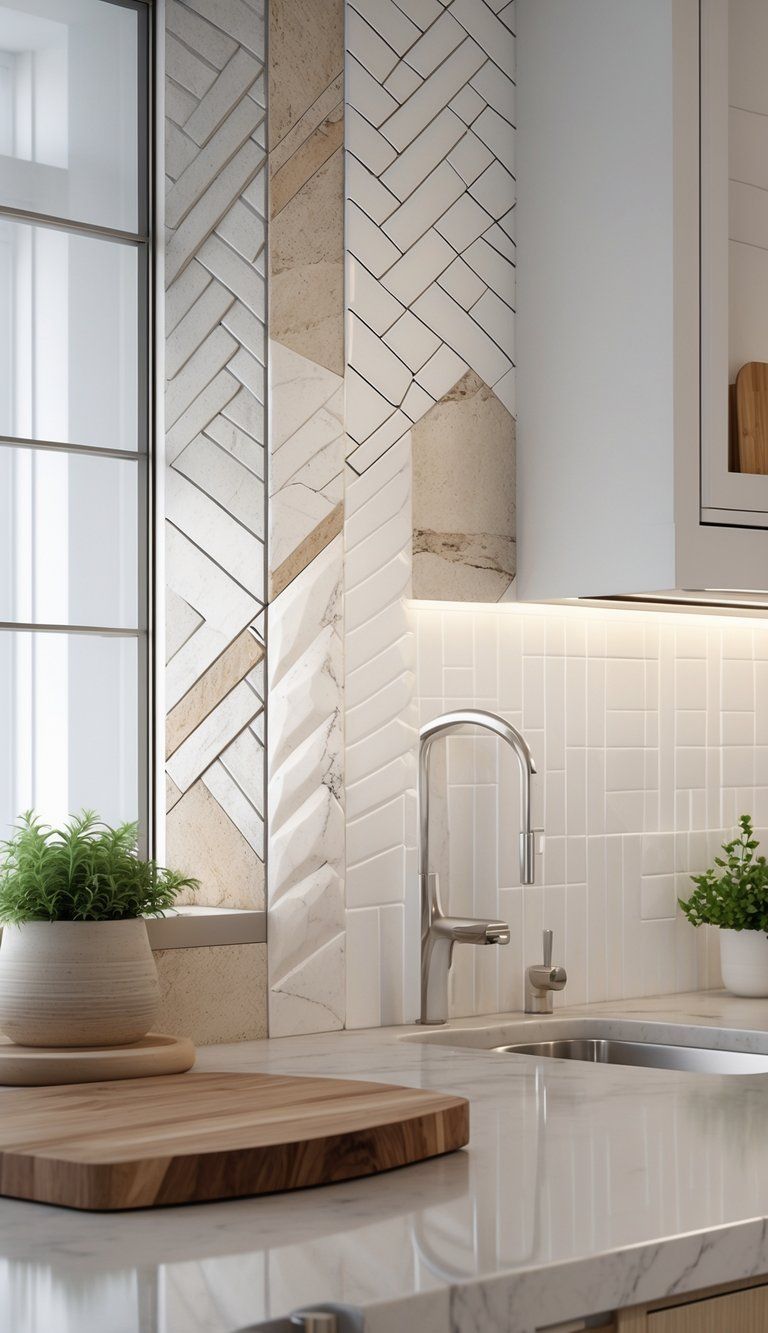
Some backsplash patterns just never quit. Even with basic materials, these layouts can turn your backsplash into a lasting focal point.
Herringbone and Chevron Choices
Herringbone patterns add instant interest with their zigzag layout. People have used this look since Roman times, so it’s definitely not going anywhere. For a modern classic, try:
- Standard herringbone: Classic 45-degree zigzag
- 90-degree herringbone: Feels a bit more contemporary
- Mixed-size herringbone: Different tile sizes for extra depth
Chevron is a close cousin—tiles line up to create sharp, clean points. This pattern pulls your eye across the kitchen and works best in white or neutrals for long-term style.
You can make these patterns pop with contrasting grout. Light tiles with dark grout show off the layout, while matching grout keeps it subtle.
Mosaics for Subtle Detail
Mosaic backsplashes bring a timeless charm with their intricate details. These little tiles add texture and visual interest, but they don’t take over the space.
Classic mosaic options include:
- Penny rounds (those tiny circular tiles)
- Hexagon tiles, all the same color or a mix
- Basketweave patterns with rectangular pieces
If you want something that lasts, natural stone mosaics in marble or travertine are a solid pick. They age gracefully and pick up character as the years go by.
Mosaic patterns really shine in neutral palettes. Whites, grays, beige, and soft blues seem to outlast trends, unlike bold colors that can feel dated fast.
You can always sneak in a subtle accent color that ties into your kitchen’s permanent features.
Try using mosaics just in one spot, maybe behind the range, and stick with simple tiles elsewhere. It keeps things balanced and draws the eye where you want it.
Emerging Timeless Trends
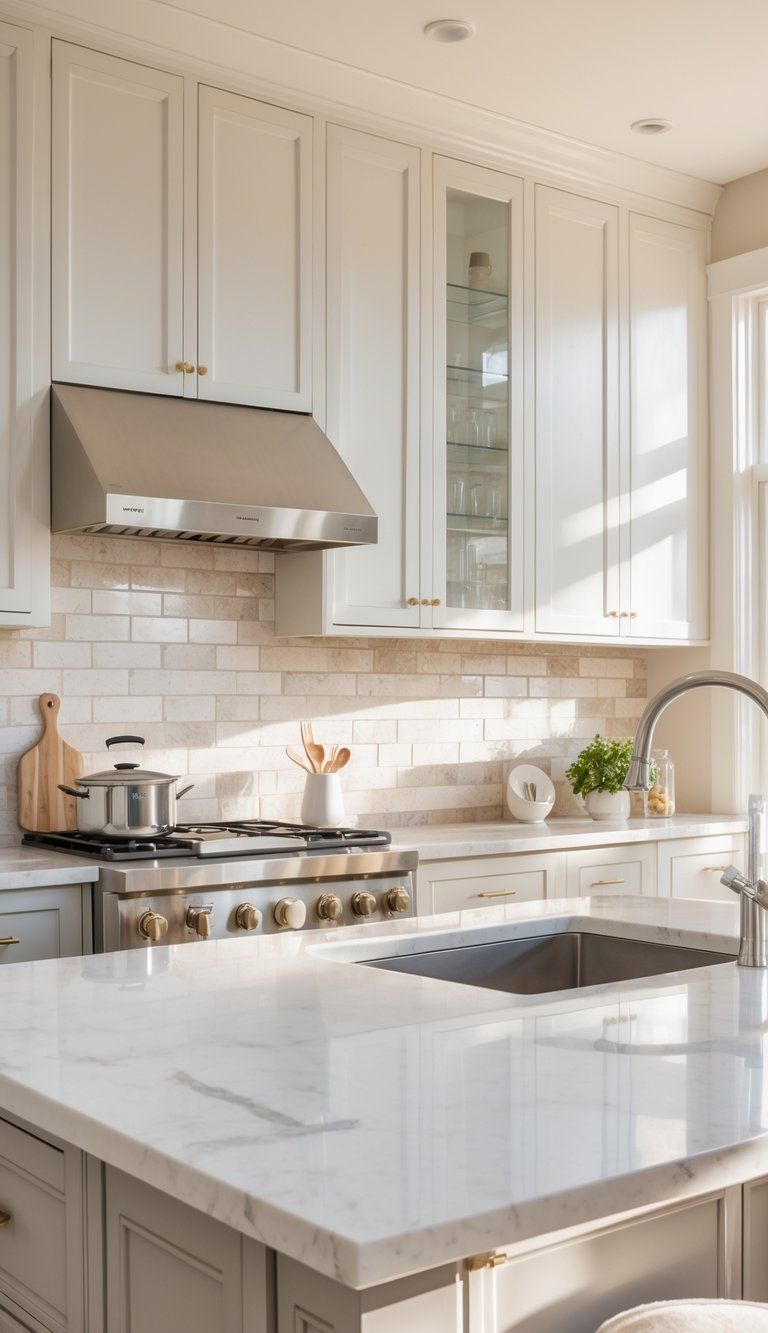
Some backsplash styles fade out quickly, but a few newer trends seem here to stay. They blend personality with classic vibes, so your kitchen keeps its value and never feels stale.
Zellige and Handcrafted Surfaces
People can’t get enough of zellige tiles lately, and honestly, it’s easy to see why. These Moroccan-inspired tiles have little flaws and variations—each one’s a bit different, with soft color shifts and a glossy, uneven surface that plays with the light.
Zellige feels timeless because of its handmade look. Unlike those factory-perfect tiles, these have stories and warmth built in.
You’ll see them in both modern and traditional kitchens, and they’ve been around for centuries.
Other handcrafted options are catching on too:
- Hand-painted ceramic tiles with simple, charming patterns
- Terra cotta tiles that show off natural variation
- Artisanal ceramic tiles with gentle glazes
These surfaces only get better as they age, picking up a patina that adds to their appeal.
Solid Colors and Minimalist Appeal
Solid-colored backsplashes give you a crisp, clean backdrop. They don’t fight for attention, so other kitchen features get to shine.
Popular choices right now:
- Matte black: Adds drama, especially in bright kitchens
- Soft whites: Keeps things light and classic
- Warm neutrals: Adds a gentle glow without being pushy
The trick with solid colors is all about texture. Even a simple white backsplash looks interesting if you play with:
- Tile sheen that varies just a bit
- Shapes like hexagons or long rectangles
- Surfaces with a little texture or depth
This minimalist approach really nails that “less is more” feeling. It’s easy to swap out other kitchen elements around a solid backsplash as styles change.
Materials and Choices to Approach with Caution
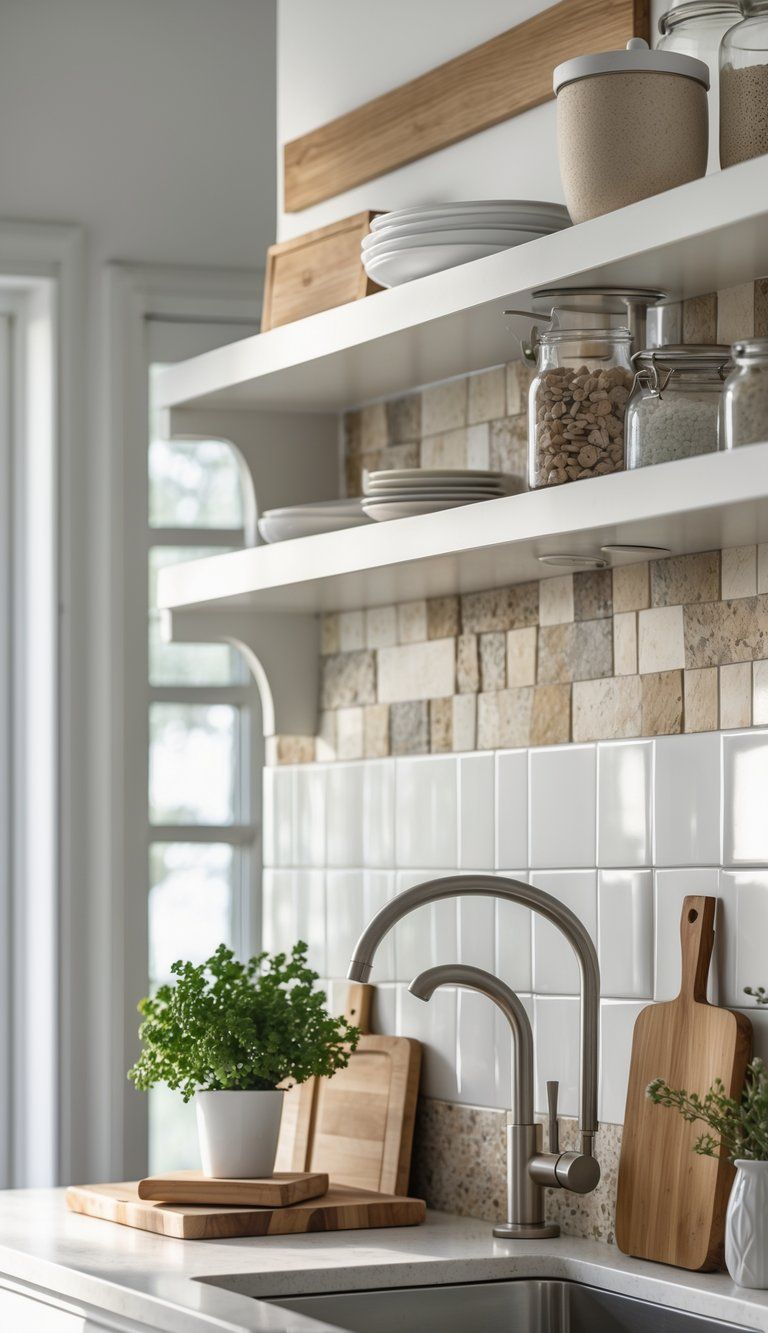
Picking the right backsplash material can be tricky. Some options seem cool at first but can date your kitchen fast. It’s worth knowing what to avoid to save yourself from a costly redo later.
Fads That Date Quickly
Trendy materials don’t usually stick around. Chalkboard paint backsplashes, for example, might be fun for notes or meal planning, but they rarely age well. They can leave your kitchen looking more like a temporary project than a real design choice.
Bright mosaic glass tiles had their moment in the early 2000s, but now they just scream outdated. Penny tiles can feel busy and overwhelming once the novelty fades.
Metallic tiles with high-shine finishes show every fingerprint and scratch. They also follow trends that shift quickly.
Materials to approach cautiously:
- Iridescent or holographic tiles
- Heavily patterned cement tiles
- Plastic or vinyl backsplash options
- Stick-on temporary backsplash solutions
Overly Ornate or Themed Options
Themed backsplashes—think Tuscan murals or Mediterranean designs—can get old fast as tastes change. They might fit your current style, but they make it tough to update your kitchen later.
Overly complex patterns tend to dominate the space. Your backsplash should support the rest of the kitchen, not fight with it.
Tiles with raised patterns collect grease and dust, which makes cleaning a pain.
Highly specific styles, like ones with wine bottles or fruit baskets, may seem cute at first but can wear out their welcome quickly.
If you plan to sell your home, keep in mind that bold backsplash choices can push buyers away. They’ll probably factor in the cost to replace them.
Implementing Your Timeless Backsplash Selection
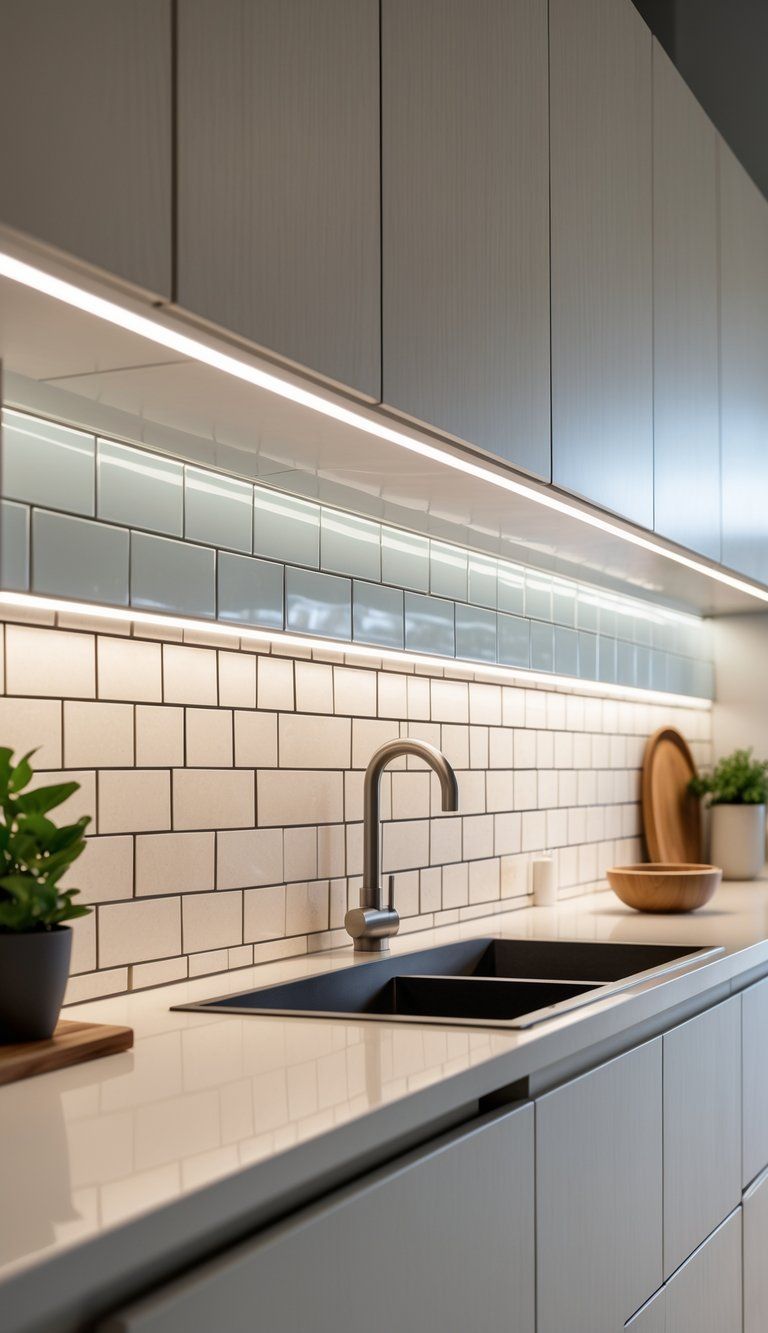
Once you’ve picked your timeless backsplash, it’s time to make sure it fits with the rest of your kitchen. The way you tie it in with your cabinets and counters really matters.
Pairing with Cabinets and Countertops
Try to let your backsplash work with your cabinets and countertops, not against them. If you have white or light cabinets, marble slabs with gentle veining add interest without stealing the show.
Dark cabinets? Go for lighter backsplashes to keep things balanced. Honed marble gives a soft, matte look and works with both modern and classic cabinets.
When you’re matching with countertops, aim for coordination, not a perfect match. Busy countertops look best with simple backsplashes, while plain counters give you more room to play with patterns.
For a pulled-together look in your kitchen renovation, pull a secondary color from your countertop and use it in your backsplash. It’s a subtle way to connect everything.
Balancing Personal Taste and Longevity
Sure, everyone talks about timelessness, but your kitchen should actually feel like yours. Add your personality with accessories or things you can swap out easily—don’t commit to something permanent unless you’re absolutely sure.
Love bold colors or wild patterns? Go for it, but maybe keep them in check. You could use a neutral backsplash and just add a splash of color with a few accent tiles behind the range. That way, it’s not overwhelming.
Try to picture how you’ll feel about your choices in five or ten years. Will you still want that bright blue backsplash staring at you every morning? Maybe a classic white subway tile with some interesting grout will age better and not drive you crazy down the road.
Natural materials like marble bring their own personality. Honed marble, with its softer look, hides wear and tear better than polished stone. Over time, it develops a patina that honestly just makes it more charming.

